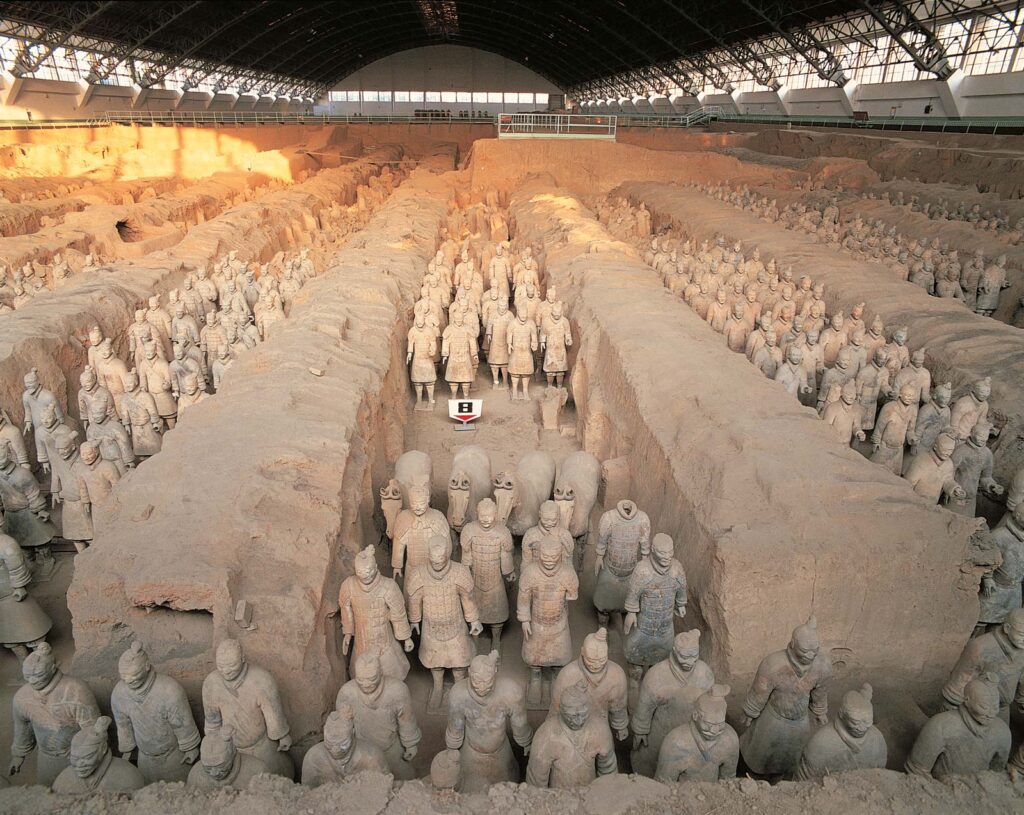China has unearthed the largest ancient tomb of the Qin Dynasty. Nearly two hundred people were buried
Mentions the ancient tombs of China. The first thing many people think of is the mausoleum of Qin Shihuang, but the tomb of Qin Shihuang has not been fully excavated. Many people may not know that the largest ancient tomb unearthed in China is the tomb of the ancestor of Qin Shihuang.
In 1975, an archaeological team from Shaanxi searched for the relics of the ancestors of the Qin Dynasty in Shaanxi. At that time, the place where the relics of the ancestors of the Qin Dynasty was most likely to exist was Fengxiang County, Baoji. The remains of the ancestors of the country.
Until 1976, strange news from a villager brought new hope to the archaeological team. The farmer’s surname was Zhao. He was a villager from the south of Fengxiang County. The villagers of Zhao said that there was a piece of cultivated land in their village, and the villagers were on it. Nothing grows Even if it is fertilizing and watering, it still does not grow as a dealer.
Later, the cultivated land was panicked and there were no people to plant it. The strange thing is that the land does not grow even weeds, and the weeds on the surrounding ground grow old and tall. The villagers were surprised by the fact that there was almost no grass in one of them.
Later, the villagers repaired houses and yards at their homes, and they all went to this open space to collect soil. This matter also became a topic of chat among the villagers, and was heard by a passing expert.
The expert judged based on experience that this place is probably under an Ancient tomb. soon came to an archaeological team to conduct a series of explorations on this open space.
The expert’s inspection results were shocked. There are buildings below and two basketball courts large enough for them. Experts further excavated. The survey gradually cleared out the outline of the underground building.

After cleaning up, it was discovered that this ancient tomb showed a “Zhong” shape. During excavation, experts discovered that the ancient tomb was divided into three floors, with a depth of more than 20 meters, which was as high as the current 8-story building. The ancient tomb is really rare, and such a tomb has never been excavated.
In 1976, archaeologists formally excavated the ancient tomb. Unexpectedly, some circular openings were discovered during the excavation process.
After careful inspection, it was found that these openings were formed later, which shows that the tomb was once dug by tomb robbers. The expert suddenly felt cold.
After, under the leadership of Deputy Captain Tian Yaqi, the staff cleaned up the three-story ancient tombs. A total of 247 robbing holes were cleared out.
These robbing holes are simply more than the mouse holes. So far, the archaeological staff has no idea about the tombs. Have some hope, but continue to dig in accordance with the regulations.
In the next cleanup, the staff cleared out more than 20 remains, which were randomly placed and formed. Afterwards, a large number of remains were discovered. After statistics, as many as 186 remains.
Experts confirmed that these remains were all martyrs. , And then cleared out a large number of bronzes. has cleared a total of more than 3,500 artifacts.
According to the inscriptions on the bronzes, it can be known that this is the tomb of Qin Jinggong. This person is the 14th monarch of Qin and the 18th ancestor of Qin Shihuang. He reigned for 40 years and belonged to Qin. During the heyday, it was just this way that they had the financial resources to build such a huge tomb.





